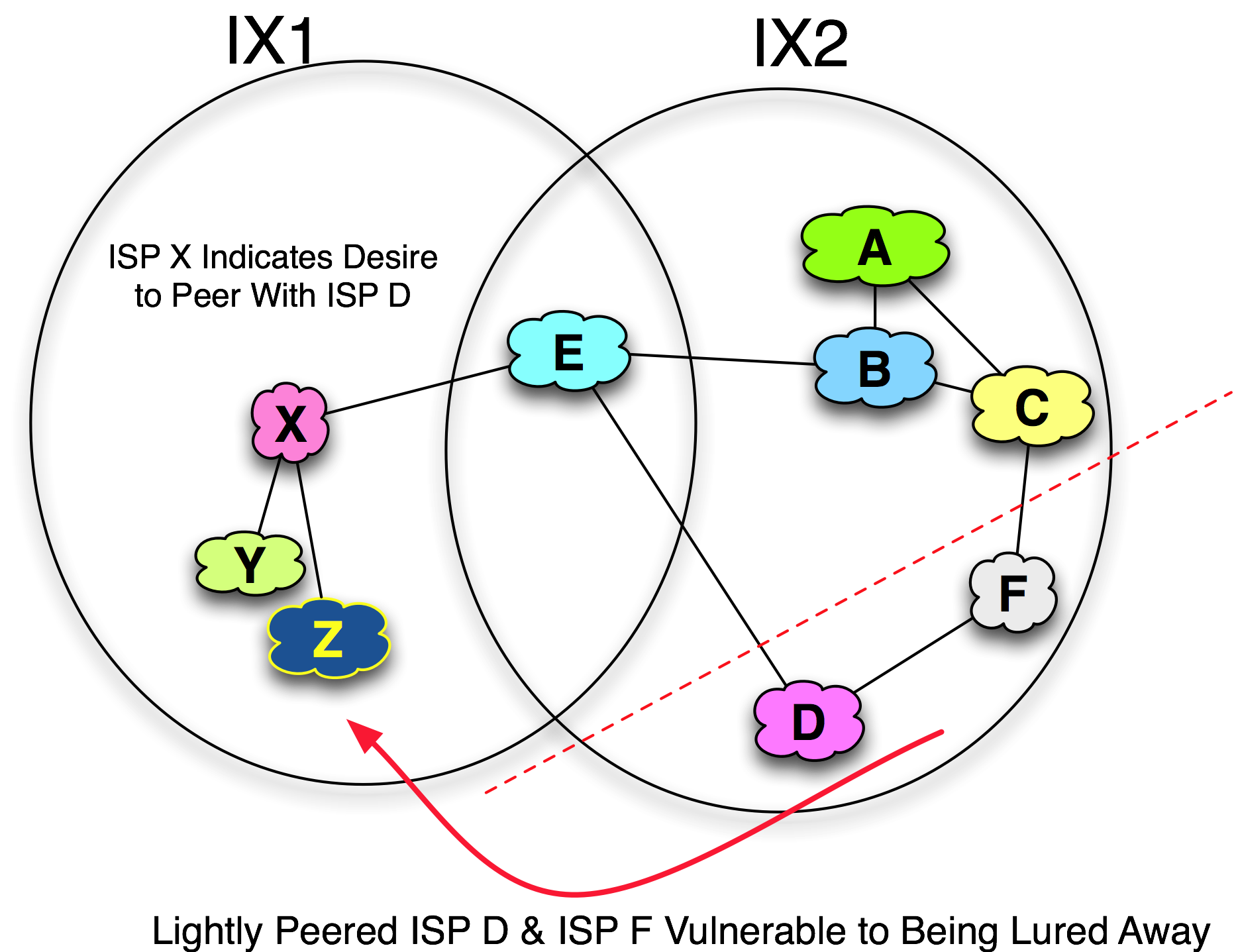Tactic 5. Divide and Conquer
When IXP participants are sparsely peered, they may not receive the maximum IXP value, and therefore they may be vulnerable to moving to a competitor IXP. Also, when the IXP participants are unhappy with the quality of the peering service – or if they have suffered from outages, poor customer service, or price increases from the IXP – they are vulnerable to moving to a competitor. This tactic requires that the upstart IXP identify these vulnerable participants, their pain points, and their current and desired peers (Figure 13-6).
Value of the IXP = f(p, r, v, m) - c
p: The population
r: The routes available
v: The volume of traffic exchanged
m: The market perception of the IXP
c: The cost of participatioon at the IXP
Next, the upstart IXP finds out how much peering traffic is exchanged and calculates how much value is derived from participation at the old IXP. Those with few peering sessions, those with small amounts of traffic exchanged, and those deriving the least value are more willing to provide details about whom they would need to peer with to make a move worthwhile. Their existing and desired peers can then be approached and brought through the same process. The information collected is invaluable as it is used to identify the cracks in the old IXP service that need to be fixed in the new offering.
The key challenge to Divide and Conquer migrations is what I call the Operations Gear Tenet:
Operational gear rarely gets disconnected.
An ISP needs to have a reason to move. At the same time, ISPs not receiving the value from the IXP that they expect can be powerful advocates for other ISPs potentially interested in moving.
In any case, this process can provide a great wealth of market intelligence on the colocation competitive landscape.

Figure 13-6. Divide and Conquer.

